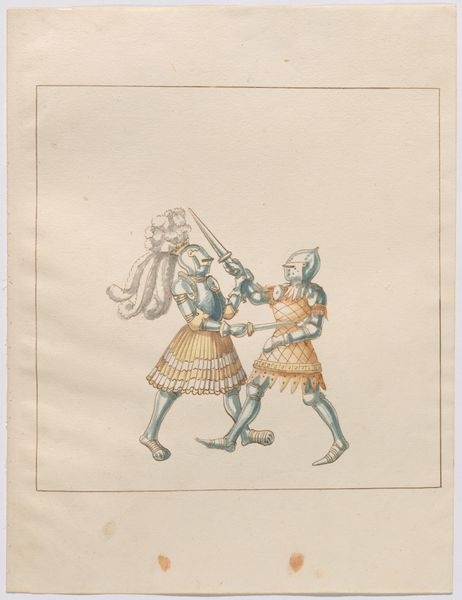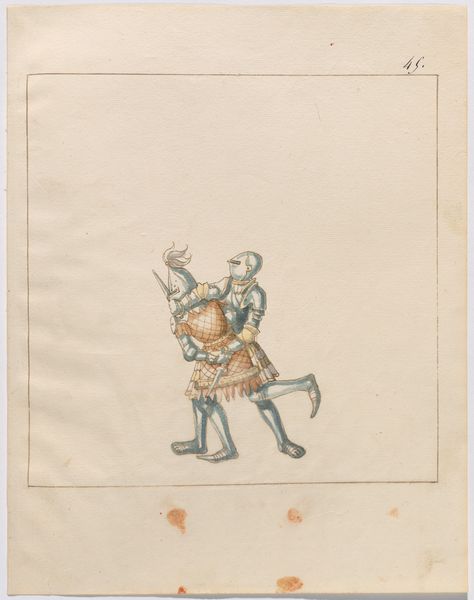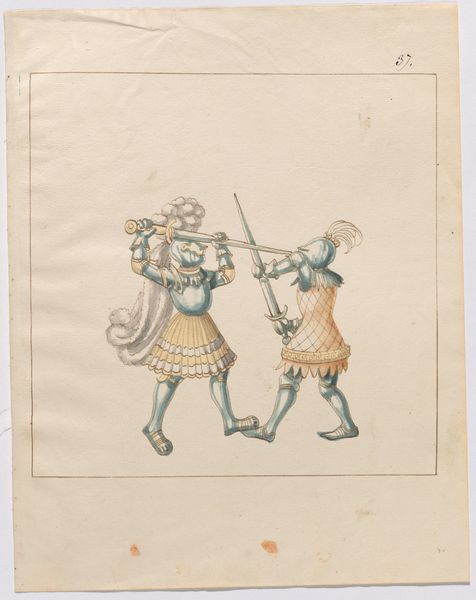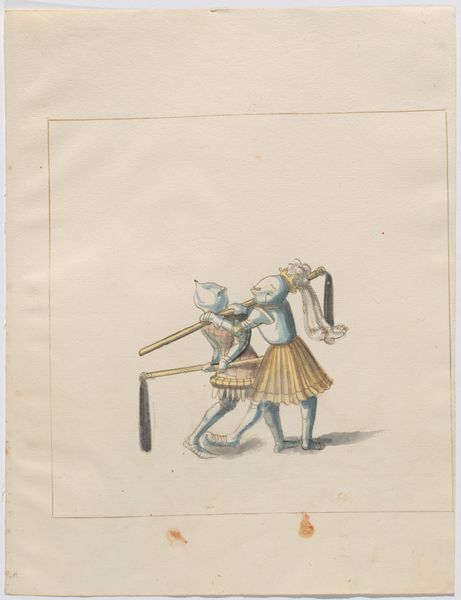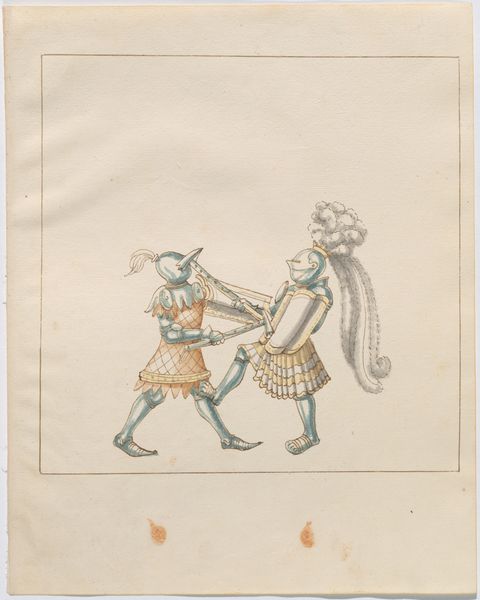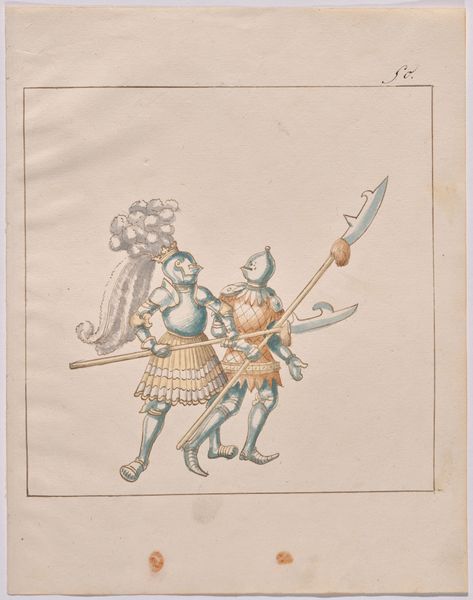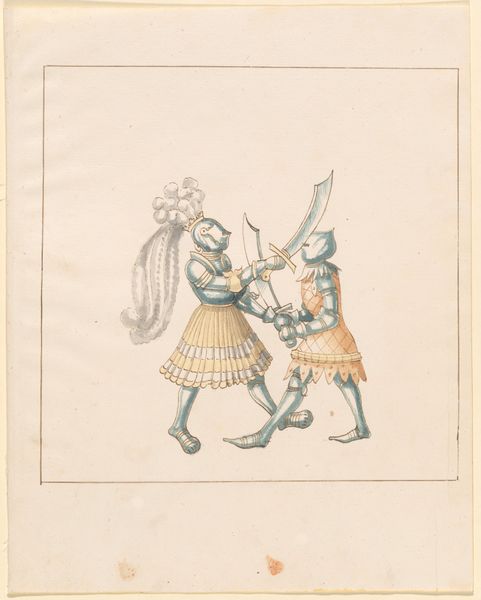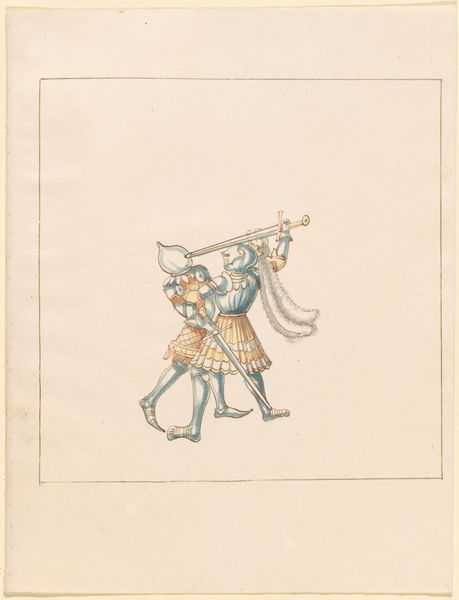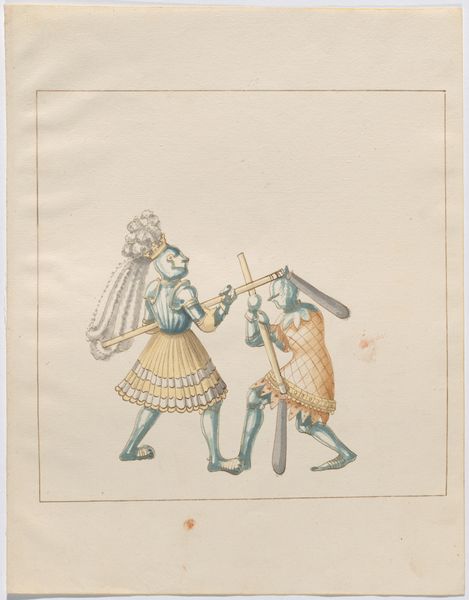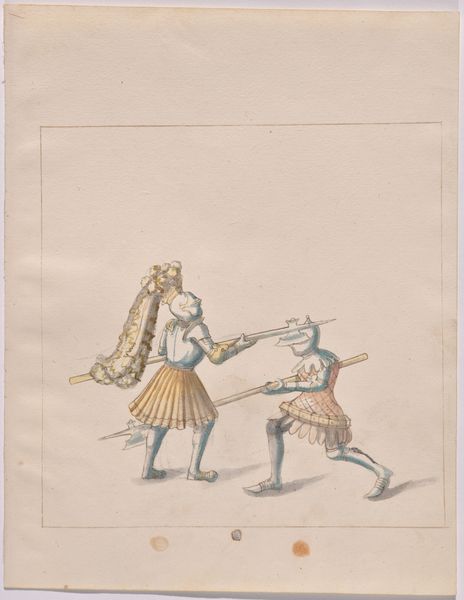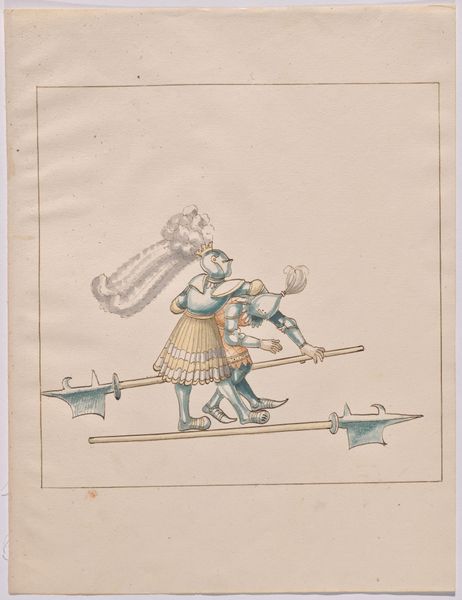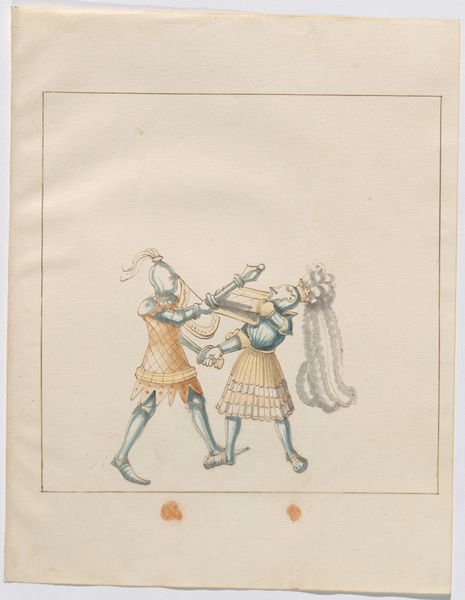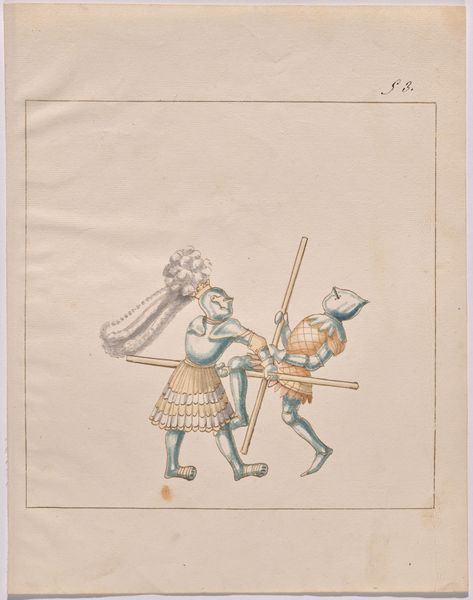
drawing, watercolor, ink
#
drawing
#
figuration
#
11_renaissance
#
watercolor
#
ink
#
history-painting
Dimensions: sheet: 32.9 × 27.2 cm (12 15/16 × 10 11/16 in.)
Copyright: National Gallery of Art: CC0 1.0
Editor: So this intriguing drawing, "Foot Combat with Daggers" from around 1512-1515, made with ink and watercolor, depicts two figures locked in battle. There's something about the precision of the linework, and the cool palette that I find captivating. What do you see in this piece? Curator: Well, let’s consider the social context of its creation. Notice how much emphasis is placed on the crafting of armor and weaponry. The drawing itself serves almost as a record, or even a blueprint, detailing the material culture of combat at that time. How was armor like this made, who was able to afford such equipment, and what does this tell us about Renaissance society and the means of production? Editor: That’s a perspective I hadn’t considered. I was more focused on the figures themselves and the narrative of the fight. But you’re right, the drawing highlights the armor's materiality. It must have taken significant resources and skilled labor. Curator: Exactly. We also need to consider the status of "drawing" at this time. Was it a preparatory sketch, a didactic illustration for aspiring fighters, or something else entirely? What would it have meant to invest valuable materials, like ink and pigments, in such a depiction? This challenges a rigid distinction between 'fine art' and more utilitarian forms of craftsmanship and visual recording. Editor: So you are suggesting that it's less about high art and more about material documentation and social hierarchies of the period? The ink, the watercolor, and the paper, combined with the artistry, elevate a record of fighting into something more complex. Curator: Precisely. Consider it as a glimpse into the economic and social landscape of Renaissance combat, rendered through very specific and valuable materials. The artist’s labor itself is a key element of the piece, shaping both its form and meaning. Editor: I am glad you pointed this out; I was too focused on the form and drama and less on what this picture tells about how it came to be. Thank you. Curator: My pleasure! Thinking about art this way opens up many new doors and questions.
Comments
No comments
Be the first to comment and join the conversation on the ultimate creative platform.

